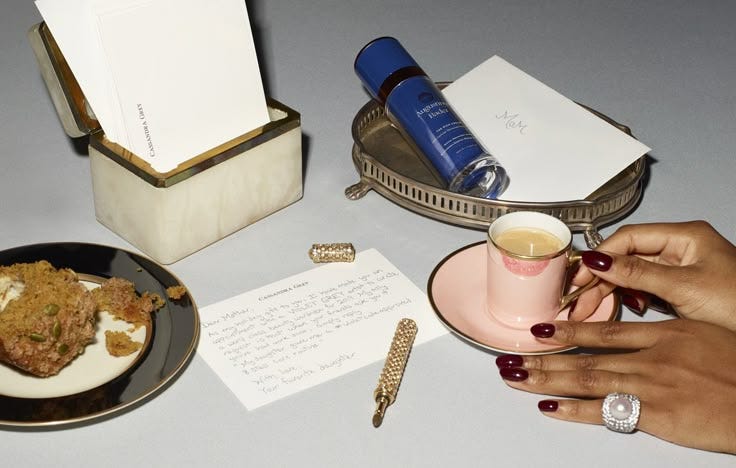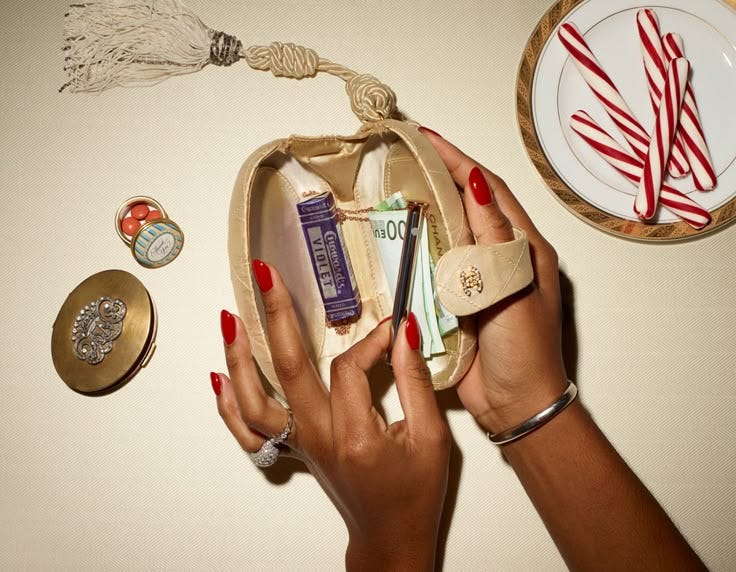It feels like everything today is made to fall apart. I can’t be the only one noticing how, for the average person, spending never really stops—it just cycles through the same mundane, everyday objects. Unless we actively seek out a premium product with a premium price tag, there’s an unspoken guarantee that your Target makeup bag will need replacing in a year.
When did we stop making things with longevity in mind? I understand the logic behind it—the “common sense” explanation—but why have we accepted it so easily?
Not long ago, I found myself deep in thought, asking a simple question: Do I own anything that could be passed down for generations? The answer was a quick, resounding no. But then I wondered—why? The reality is, quality is no longer the standard; it’s a luxury. The idea of owning something beautifully crafted, something meant to last a lifetime, has become a privilege rather than an expectation.
The world passed up craftsmanship for fast production.
Somewhere along the way, we stopped expecting things to last. We accepted planned obsolescence as the norm, as if it were a natural law rather than a strategic decision by corporations. We’ve grown used to repurchasing—constantly replacing what should have been a one-time investment. Our wardrobes are filled with fast fashion, our homes with trendy decor destined for donation piles, and our gadgets designed to fail right when a newer model drops.
But when did we stop valuing longevity? When did we decide that disposability was an acceptable trade-off for convenience?
I think about my grandparents’ generation, how they cherished what they owned. A leather wallet that softened with time, a watch passed down from father to son, a cast-iron skillet seasoned by decades of meals. These weren’t just objects; they were heirlooms, imbued with history and meaning. Today, we rarely own anything with the potential to carry that kind of weight.
The problem isn’t just affordability—it’s mentality. We’ve been conditioned to prioritize trends over timelessness, to opt for the quick and easy rather than the built-to-last. The market tells us that new is always better, that replacing is smarter than repairing, and that durability is a luxury, not a standard.
But what if we rejected that? What if we sought out objects that could live with us, not just for a season, but for a lifetime? Imagine a world where every purchase was made with care, where brands took pride in craftsmanship again, and where we, as consumers, demanded quality over quantity.
It’s not just about sustainability—it’s about intention. It’s about surrounding ourselves with things that matter, things that endure. Because, ultimately, longevity isn’t just about the products we buy; it’s about the life we build around them.
"The bitterness of poor quality remains long after the sweetness of low price is forgotten."
– Benjamin Franklin
How Do We Fix This?
The good news is that we don’t have to accept this cycle of disposability. We can shift our mindset and our habits, making purchases with intention rather than impulse. It starts with small, conscious choices—ones that prioritize quality, longevity, and craftsmanship over momentary convenience.
So, what does that actually look like in practice?
The first step is shifting our mindset. Instead of asking, “What’s the cheapest or trendiest option?” we should be asking, “Will this last? Will I still love this in five, ten, twenty years?” Longevity should be the goal, not an afterthought.
Start with the essentials. Buy fewer, but better. A well-made leather bag instead of another synthetic one that will crack in a year. A real wool coat that won’t pill and thin out after a season. Solid wood furniture that ages beautifully instead of particleboard that warps and breaks. Stainless steel over plastic. Handcrafted over mass-produced.
Prioritize craftsmanship. Support artisans and brands that value quality. Look for brands with repair programs, lifetime warranties, or materials that get better with time. Read labels, research materials, and be intentional with every purchase.
Take care of what you own. Learn to mend, polish, and restore. Fix your shoes instead of tossing them. Invest in proper storage and maintenance. Good things last when we treat them with care.
The change starts with us. Let’s choose to buy things meant to last—not just for us, but for the generations that follow.
Because in the end, the goal isn’t just to own more—it’s to own forever.





